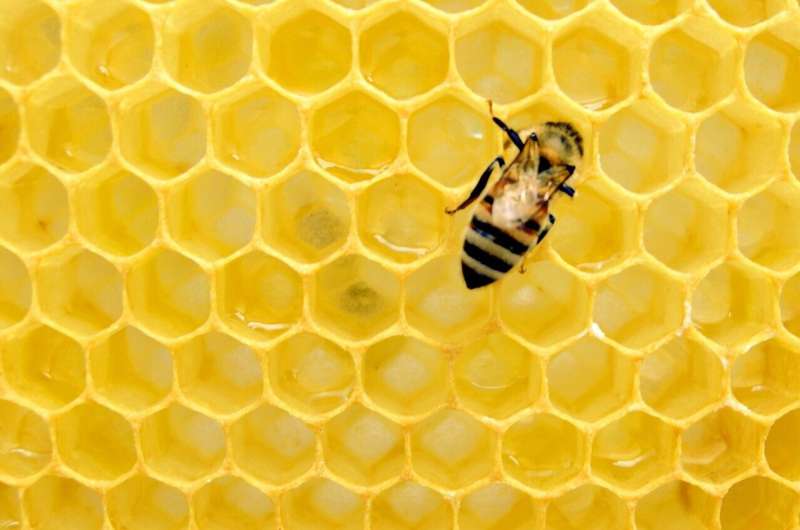Credit: Unsplash/CC0 Public Domain
A team of researchers from Nottingham Trent University, l'Institut National de Recherche en Agriculture and Centre Apicole de Recherche et d'Information reports accurately predicting honeybee swarming by listening to sounds made by the queen bee in a nest. In their paper published in the journal Scientific Reports, the group describes what they learned about honeybees when they placed accelerometers in the hives.
For honeybees, swarming is part of the reproduction process—large numbers of bees leave one nest with a new queen to start another. But accurately predicting when this swarming will occur has remained elusive. In this new effort, the researchers have found a method for doing so that has proved to be up to 90 percent accurate.
The work involved placing accelerometers in 25 honeybee hives in several different locations in France. The devices captured the sounds made by the honeybees based on their vibrations. The data from the accelerometers was analyzed with a machine-learning algorithm that had been trained to recognize honeybee sound patterns.
The researchers found that the sounds made by the queen, described as quacking and tooting, were not meant for other queens, as prior research had suggested. Instead, the sounds were directed at the worker bees. More specifically, they found that the queens made quacking sounds as a way to let the worker bees know that they were ready for release from their cell after growing to maturity—the queens cannot let themselves out. Once released, a queen would march around the hive announcing itself to the workers with tooting sounds. Shortly thereafter, the new queen and approximately half of the bees in the hive would leave their home and engage in swarming—the process of finding a new nest. The remaining bees would then ignore the quacks being made by other queens ready for release for up to two weeks, before releasing one of them. The researchers found that by monitoring the quacks and toots, they could accurately predict when a swarm would occur—an important finding for bee preservation efforts.
More information: Michael-Thomas Ramsey et al. The prediction of swarming in honeybee colonies using vibrational spectra, Scientific Reports (2020). DOI: 10.1038/s41598-020-66115-5
Journal information: Scientific Reports
© 2020 Science X Network
























